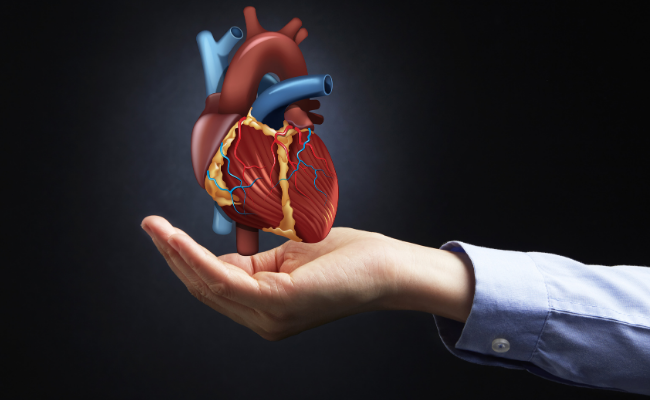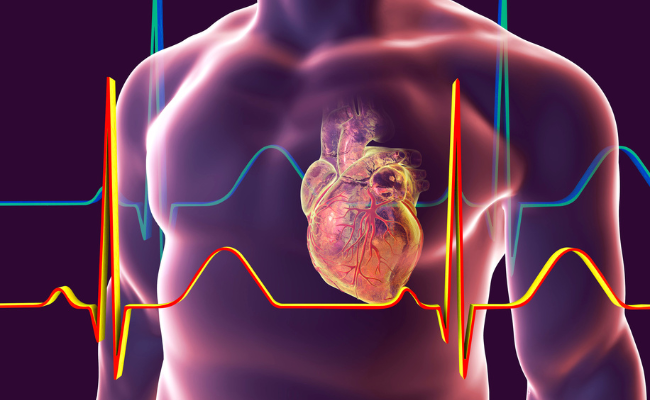How to Treat Pericarditis?
- November 30, 2023
- No Comments
What is Pericarditis?
Pericarditis is a medical condition marked by the inflammation of the pericardium, a double-layered sac encompassing the heart, crucial for maintaining its integrity and functionality. This inflammation can result in varying degrees of chest pain, often the primary symptom of pericarditis. Ordinarily, the pericardium contains a small amount of fluid, facilitating the heart's smooth movement within the chest cavity. However, when inflammation occurs, the pericardial layers can rub against each other, causing discomfort and pain.
This inflammatory manifestation of pericarditis involves the inflammation of the delicate two-layered sac surrounding the heart, filled with fluid. It typically emerges suddenly and may endure for a few weeks to several months. Although pericarditis commonly resolves within three months, some individuals may undergo intermittent episodes over several years. Periodically, this inflammation leads to the accumulation of excess fluid between the pericardial layers, referred to as pericardial effusion.
Why Does Pericarditis Occur?
- Pericarditis can result from various causes, ranging from infections to autoimmune conditions and other underlying health issues. Infections, particularly viral infections, are a common trigger for pericarditis. Viruses such as the coxsackievirus and those associated with the flu can lead to inflammation of the pericardium. Bacterial infections, although less common, can also contribute to pericarditis.
- Autoimmune diseases, where the immune system mistakenly attacks the body's tissues, can be another cause. Conditions like rheumatoid arthritis and lupus have been linked to pericarditis. Additionally, pericarditis may occur after a heart attack, as inflammation spreads to the pericardium. In some cases, pericarditis can be a side effect of certain medications.
- The inflammation associated with pericarditis can have cascading effects on the cardiovascular system. In severe cases, it can lead to complications such as pericardial effusion, where excess fluid accumulates in the pericardial sac, and constrictive pericarditis, a condition where the pericardium becomes stiff and hinders the heart's ability to pump blood effectively.
How is Pericarditis Diagnosed?
- Diagnosing pericarditis involves a combination of medical history review, physical examination, and diagnostic tests. A healthcare provider will inquire about symptoms, potential triggers, and risk factors during the medical history review. The physical examination may involve listening for specific sounds, such as a pericardial friction rub, using a stethoscope.
- Diagnostic tests are crucial in confirming the diagnosis and understanding the extent of inflammation. An electrocardiogram (ECG or EKG) is a commonly used test that can reveal characteristic changes associated with pericarditis, such as ST-segment elevation. Blood tests may be conducted to check for markers of inflammation, and imaging studies like echocardiography or cardiac MRI provide detailed images of the heart and pericardium.
Treatment Solutions for Pericarditis
- Nonsteroidal Anti-Inflammatory Drugs (NSAIDs): These medications, including ibuprofen or indomethacin, are often the first line of treatment for pericarditis. They work by reducing inflammation and relieving pain.
- Colchicine: This medication may be used alone or in combination with NSAIDs to prevent recurrent episodes of pericarditis. Colchicine has anti-inflammatory properties and can be effective in reducing the risk of further inflammation.
- Corticosteroids: In cases of severe or persistent inflammation, corticosteroids may be prescribed. These drugs work by suppressing the immune response, thereby reducing inflammation. However, they are typically reserved for cases where other treatments are ineffective or inappropriate.
- Rest and Lifestyle Modifications: Adequate rest is a crucial component of the treatment plan, allowing the body time to heal. Physical activity should be limited during the acute phase of pericarditis to prevent additional strain on the heart.Lifestyle modifications, such as avoiding potential triggers and maintaining a healthy lifestyle, can contribute to overall well-being and reduce the risk of recurrence.
- Pericardiocentesis: In cases where pericardial effusion leads to a significant accumulation of fluid in the pericardial sac, a procedure called pericardiocentesis may be performed. This involves using a needle to drain the excess fluid, relieving pressure on the heart.
- Surgery: Surgical intervention is rarely needed for pericarditis. However, in cases of recurrent or chronic pericarditis that do not respond to other treatments, a procedure known as pericardiectomy may be considered. This involves removing part or all of the pericardium.
Benefits of Treating Pericarditis:
- Pain Relief: One of the primary goals of pericarditis treatment is to alleviate chest pain and discomfort. Effectively managing inflammation can significantly improve the individual's quality of life by relieving this distressing symptom.
- Prevention of Complications: Timely and appropriate treatment can prevent complications associated with pericarditis, such as pericardial effusion and constrictive pericarditis. These complications, if left untreated, can have serious implications for heart function.
- Reduced Risk of Recurrence: Medications such as colchicine, when included in the treatment plan, can substantially reduce the risk of recurrent episodes of pericarditis. This is crucial for ensuring the long-term well-being of individuals affected by the condition.
- Improved Heart Function: By addressing the underlying inflammation, treatment helps maintain optimal heart function. This is essential for reducing the strain on the cardiovascular system and preventing long-term complications.
- Enhanced Overall Well-being: Lifestyle modifications, including stress reduction, regular exercise, and a heart-healthy diet, contribute to improved overall health and well-being. These modifications not only complement medical treatment but also play a proactive role in preventing future episodes.










.jpg)
Comments (0)
No comments yet